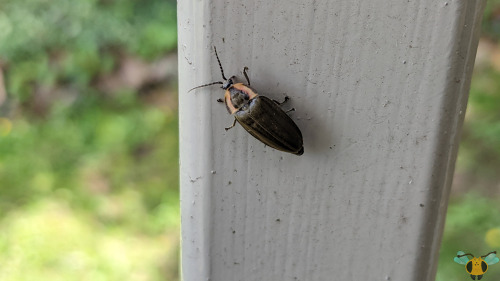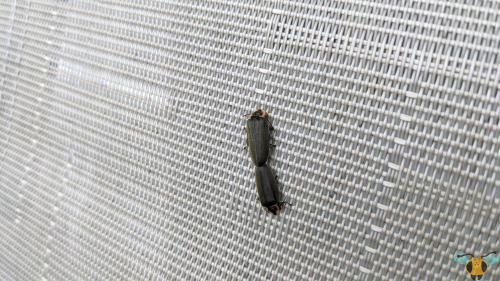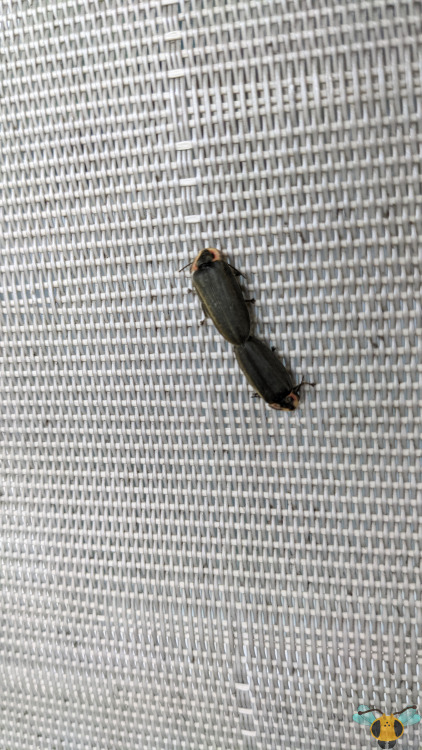Winter Firefly - Ellychnia corruscaLet’s have one more set of pictures from the Muskoka visit
Winter Firefly - Ellychnia corruscaLet’s have one more set of pictures from the Muskoka visit to round things out, shall we? Not to toot my horn but I’m very proud of Picture 1 with opened wings and exposure to the abdomen hidden beneath the shell. Interestingly, there was a short pause after opening the wings before taking flight. Anyways, the beautiful night sky of cottage country (which is dotted with many stars unobscured by light pollution) is the perfect environment for the illumination of insects like this one. Or at least it would be if this specie of Firefly was able to light up its rear as the name might hint. For this specie, only the larvae and pupae can glow, the adults losing this ability upon maturation. It’s not all bad news though since this Beetle spends most of its time as a larva anyways, scourging around the leaf litter and under logs in search of insects and slug to eat. Their diet changes upon reaching adulthood, shifting from carnivorous to hungering for sap and flowers. If you go looking for the larvae, know that they are quite a rare find. Fortunately you’ll know them when you see them as they might glow and they closely resemble Trilobite Beetles. If you can’t find the larvae, adults will be more out in the open. They fly during the daytime and crawl about on trees, leaves and man-made structures. The adults should be recognizable enough with the colors of their armor, their antenna type and their (relatively) large size compared to other Fireflies. The specimens you see before you are likely those that have emerged after an overwintering stint as adults. It’s the ability to survive the harsh winter that gave this Beetle its name, and with the weather turning warm, it’s time to find a mate. If the temperatures can hold steady, there could be a second generation, but these are another generation from the eggs laid earlier in the year. Nevertheless, the Fireflies that emerged from winter waste no time forming mating pairs. It’s not really possible to discern which Beetle is the female or the male in these pictures (you’d need to flip them over to check the final abdomen segment which would be quite rude). To avoid sitting on them, you can persuade them to climb on a stick and relocate them to a more green environment…as I did. I was called up to the balcony to investigate what looked like a Caterpillar, but was in fact the Beetles you see before you. I can sort of see the resemblance. They can move together (even turning without a break) to escape a perceived threat, though it looks more like one is taking the lead and dragging the other along. While transporting them, the leaders switched occasionally, resulting in a change of direction. Fascinating!Pictures were taken on May 28, 2022 in Muskoka with a Google Pixel 4. For anyone interested in more information, I enjoyed reading this paper by Rooney and Lewis covering the Winter Firefly. -- source link
Tumblr Blog : jonnysinsectcatalogue.tumblr.com
#ontario insect#firefly#winter firefly#beetle#coleoptera#insect#muskoka#may2022#mating pair









